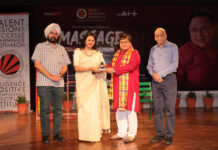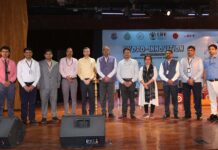The AMI-LPU unit, Department of Microbiology, School of Bioengineering and Biosciences, organized a live webinar on Role of Wastewater on Sustainable Solutions and Policy Recommendation today. With the Resource person Dr. Jastin Samuel, Assistant Professor, Department of Microbiology, this session was coordinated by Dr. Gurmeen Rakhra, Assistant Professor, Department of Biochemistry. Established in 2018, the AMI-LPU unit has annual members counting up to 80 with 28 live members.
Dr. Jastin Samuel holds a Ph.D. in Microbiology, has been working as Assistant Professor at the School of Bioengineering and Biosciences, LPU for quite a long time. He focuses his research on Water Valorization, Toxicology, Sustainable Technology, Wastewater reuse, Microplastic pollution, and nanoplastics. He has written more than 20 articles and is a reviewer of high-impact factor journals and owns chapters in publication houses as well.
Here, I will share some of the key points from the webinar:
What is waste-water and what does it contain?
While introducing the topic, Dr. Samuel explained how different people have different perspectives of wastewater. So collectively, it is defined as the combination of domestic effluents having black and grey water; industrial effluents and commercial establishment’s water; agricultural waste and horticultural and aquaculture effluent. Wastewater management is quite significant in reducing poverty as well as sustaining services of the ecosystem; therefore, required investments must be done by the government.
In many areas, almost 90% of wastewater is discharged into freshwater bodies leading to pollution and health hazards. Wastewater is contaminated by organic compounds, pathogens, heavy metals, organic matter, nutrients, and synthetic materials. These compounds are responsible for affecting the environment, ecosystem, health of living beings, and human security.
Not only does wastewater pose a major threat to the environment but also solid waste has been an increasing concern with the growth of population and industrialization. So, it is recommended and rather compulsory for wastewater management plants to include both solid and liquid waste to achieve SDGs.
Case study of Ridgewood, USA and Nagpur, India
He explained how the village of Ridgewood in the USA has developed a wastewater treatment plant, biogas generator, and liquid waste holding tanks with low cost of operation, low carbon footprint, and sludge hauling costs. Similarly in Nagpur, the Indian Government provided funds and created mechanisms and policies for regulation under programs like JNNURM and PPP for appealing the private investors to provide funding. It has diversified the water supply by bringing up alternative sources, typically treated wastewater.
Points to be considered in Policy Recommendations
- Approaching wastewater management by multi-sectors.
- Innovative and useful approaches invested in the sustainable management of wastewater.
- Proper financing of the infrastructure of the wastewater treatment plant.
- Planning wastewater management by communities against future situations.
- Finding solutions for smart wastewater treatment.
- The central role should be played by education and awareness in wastewater management.
At the end of the session, Dr. Jastin Samuel cleared all doubts of students and concluded with “too much of everything is good for nothing”.


















